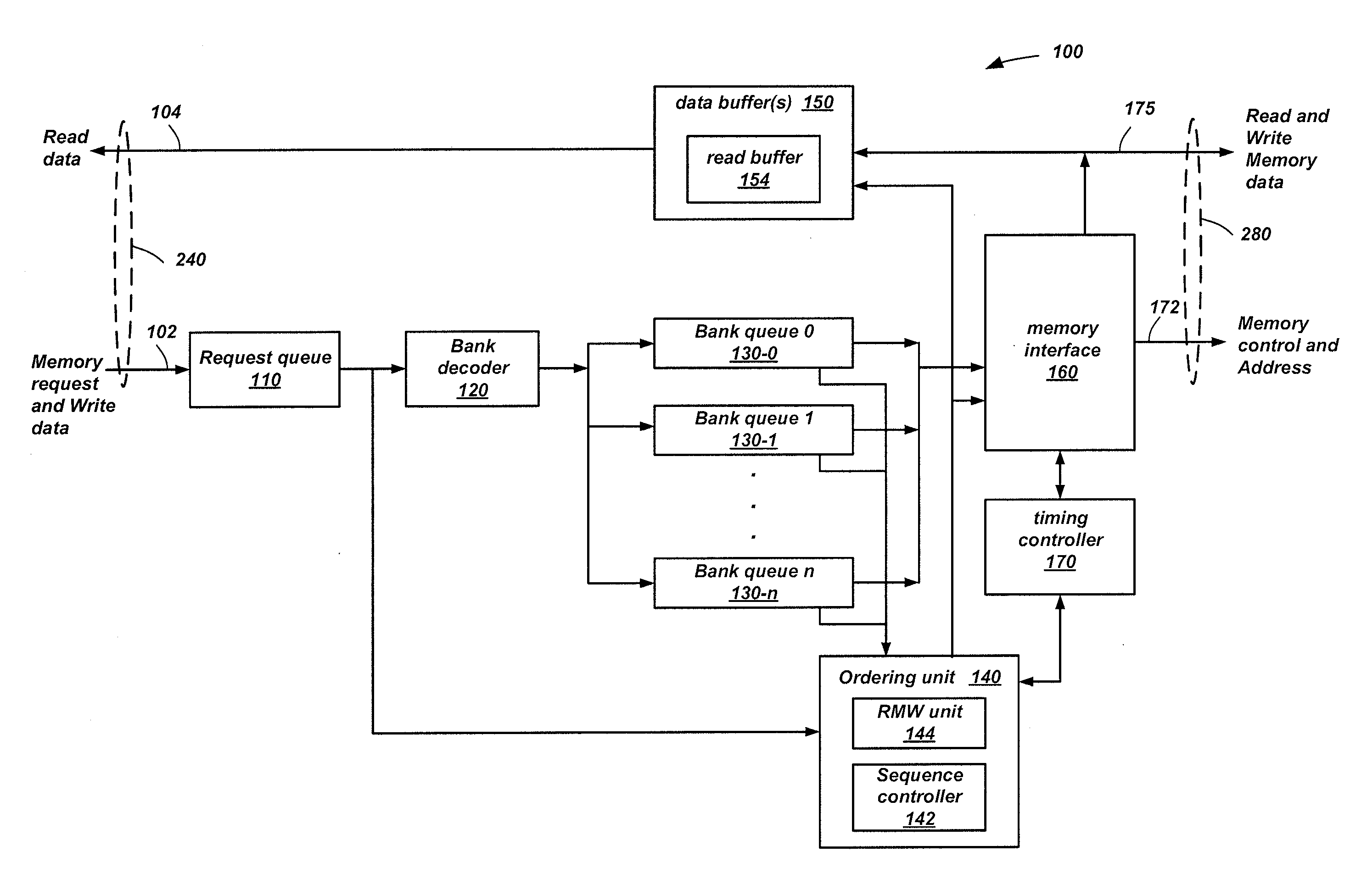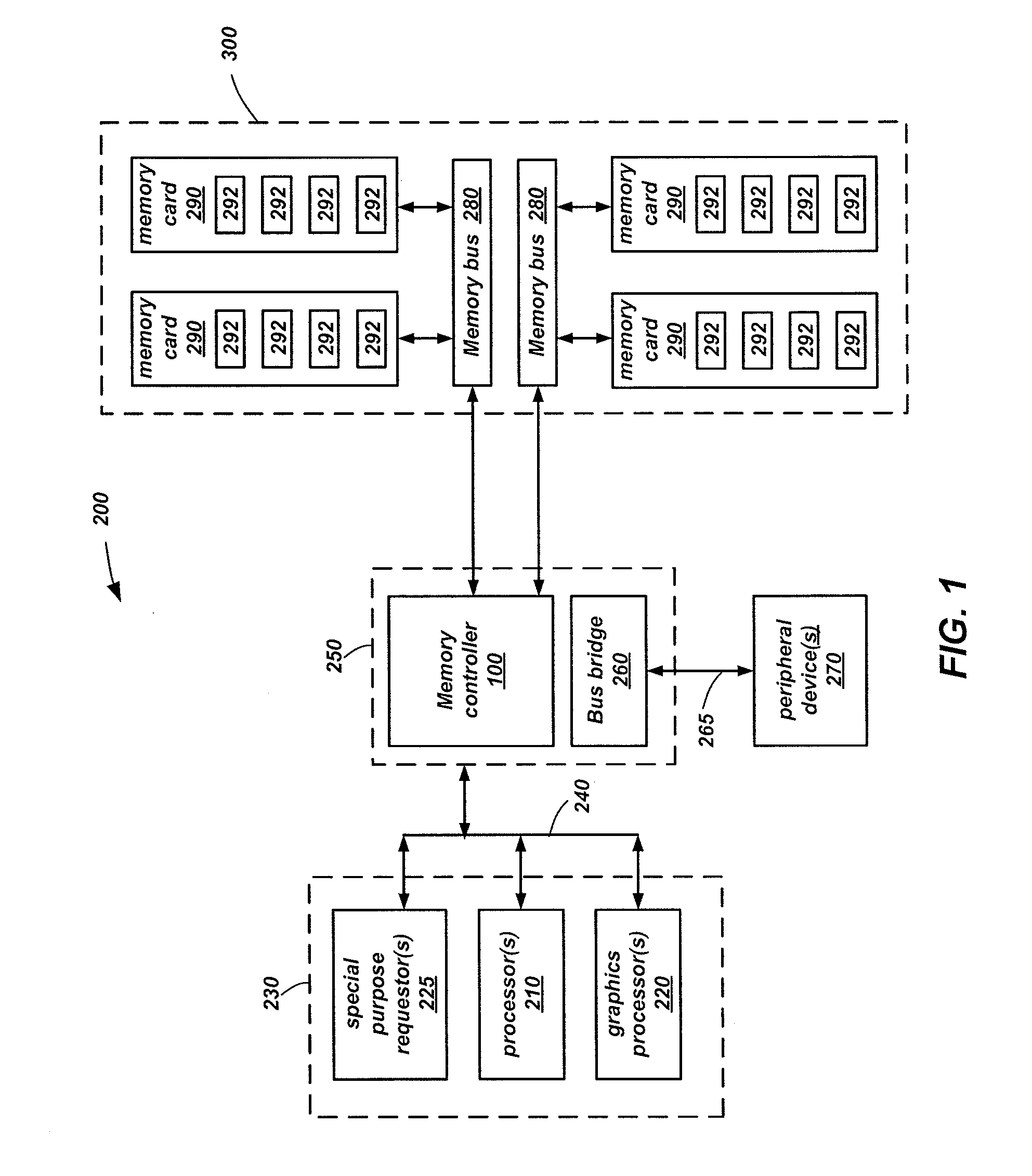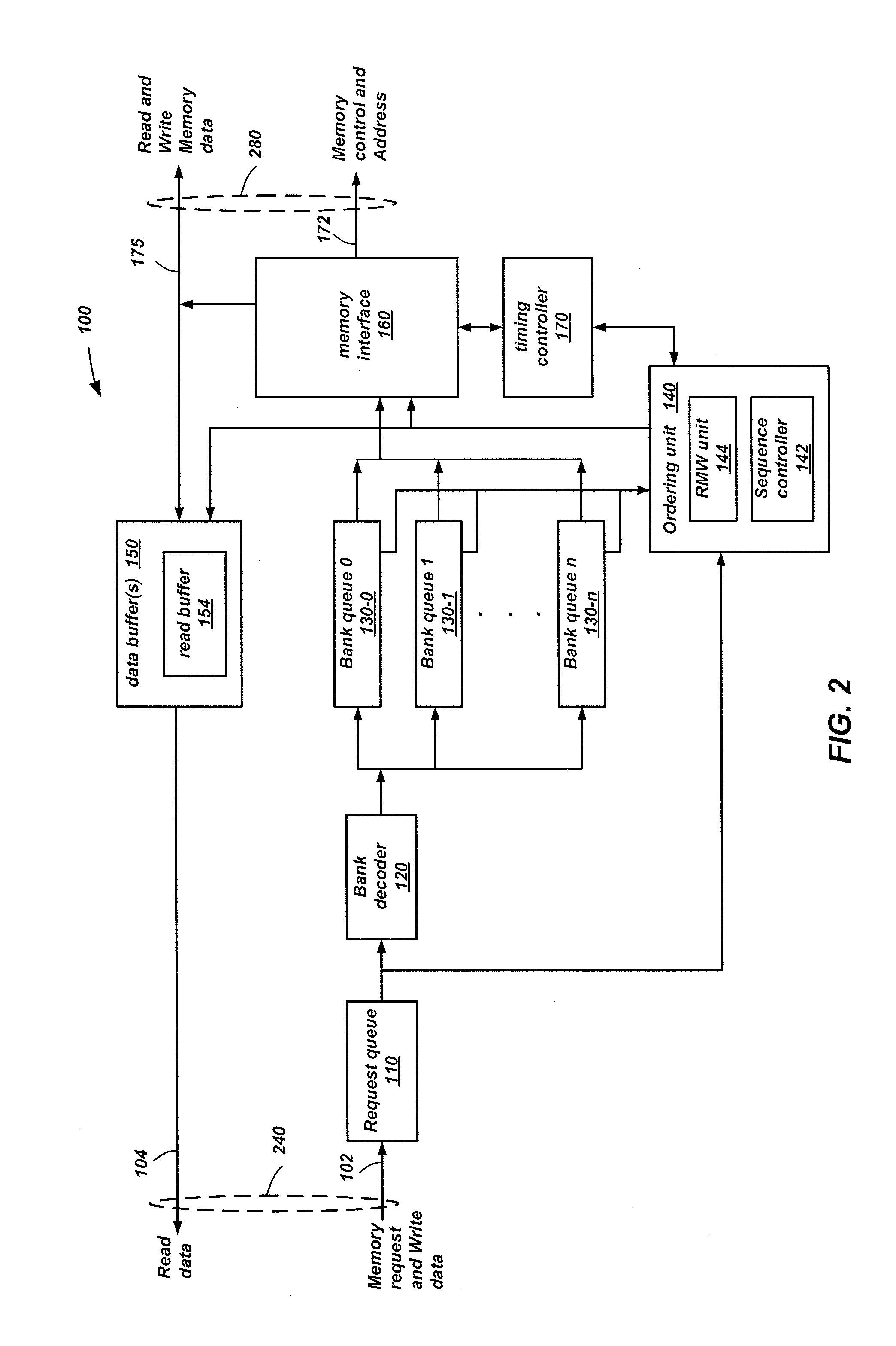System, apparatus, and method for modifying the order of memory accesses
a memory access and order technology, applied in the field of computer systems, can solve the problems of increasing the number of cores, and denying access to low priority requests for unacceptably long periods of tim
- Summary
- Abstract
- Description
- Claims
- Application Information
AI Technical Summary
Problems solved by technology
Method used
Image
Examples
Embodiment Construction
[0017]Embodiments disclosed herein include apparatuses and methods for generating improved memory performance in a system environment of multiple threads and multiple processors.
[0018]In the following detailed description, reference is made to the accompanying drawings which form a part hereof, and in which is shown by way of illustration specific embodiments in which the invention may be practiced. These embodiments are described in sufficient detail to enable those of ordinary skill in the art to practice the invention, and it is to be understood that other embodiments may be utilized, and that structural, logical, and electrical changes may be made within the scope of the present invention.
[0019]In this description, circuits and functions may be shown in block diagram form in order not to obscure the present invention in unnecessary detail. Furthermore, specific circuit implementations shown and described are only examples and should not be construed as the only way to implement ...
PUM
 Login to View More
Login to View More Abstract
Description
Claims
Application Information
 Login to View More
Login to View More - R&D
- Intellectual Property
- Life Sciences
- Materials
- Tech Scout
- Unparalleled Data Quality
- Higher Quality Content
- 60% Fewer Hallucinations
Browse by: Latest US Patents, China's latest patents, Technical Efficacy Thesaurus, Application Domain, Technology Topic, Popular Technical Reports.
© 2025 PatSnap. All rights reserved.Legal|Privacy policy|Modern Slavery Act Transparency Statement|Sitemap|About US| Contact US: help@patsnap.com



